Summary
Foxes in some urban areas do appear to be getting bolder, although there is a considerable amount of individual variation, even within the same family group. Foxes have been living in our cities since the late 1930s and many generations have grown up in an environment relatively free of persecution (very little active hunting or predation) in which most humans pose little threat to them. It seems probable that humans being either neutral (posing no threat) or positive (provider of food) entities to foxes has resulted in some being less wary of people than they were perhaps a decade ago. In rural locations where foxes are still actively persecuted by humans (e.g. farmers, gamekeepers and some hunts), foxes still appear generally wary of humans.
Some people appear to be of the opinion that foxes should run from humans, and when they don’t it can become a source of conflict. I know of no evidence to suggest that foxes becoming bolder makes them more of a threat, or more aggressive towards people. Problems may, however, arise if people mistake "bold" for "tame" and try to touch the animal.
The Details
Reports in the media over recent years have raised concerns that urban foxes are becoming bolder; that they no longer have any fear of people, do not run from people and may even approach. There have also been some suggestions in the press that foxes are unafraid of dogs and, in February 2011, TV presenter Ben Fogle reputedly “rugby tackled” a fox that chased his elderly Labrador near his home in London. The connotation from this appears to be that this makes foxes more dangerous. The question of whether foxes in general are bolder and whether this makes them inherently more dangerous to people and their pets is deceptively difficult to answer and a lot depends on people’s own personal expectation.
I ain’t afraid of no…
Boldness or shyness is usually ascribed based on how willing an animal is to approach an unfamiliar object; those that walk up to it immediately are the bold ones, while those that avoid it are considered shy. As you might imagine, however, it can be difficult to dump animals into just shy or bold categories because although a few might walk straight up to a new object and others may never approach something unfamiliar, some will bide their time for a while before approaching. In other words, different individuals within a species or population will respond differently to the situation.
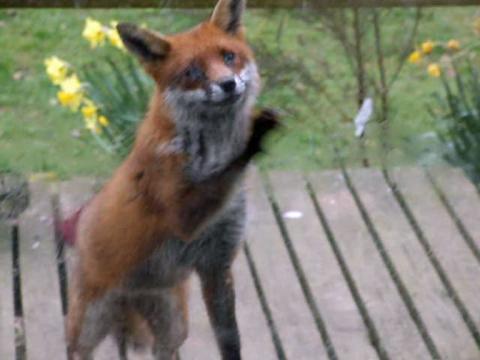
Early ethologists (people who study animal behaviour) believed that an animal’s behaviour was largely fixed and any individuality was simply fluctuation around this fixed point – in other words, it was ‘noise’ around the expected pre-programmed behaviour. We now know that behaviour is plastic (i.e. it is flexible, not fixed) and is modified according to the animal’s experience and environment. In short, behaviour changes as an animal learns. In a fascinating paper to Psychological Enquiry in 1995, Pennsylvania State University psychologist Jay Belsky outlined his differential susceptibility hypothesis, which argues that individuals vary in the degree to which they’re affected by their environment and experiences. Essentially, some are more sensitive to what life throws at them than others. What this means is that as an individual grows up, it builds a unique combination of behaviours; a personality, if you like. This is important because an animal must modify its boldness or shyness in order to make the best of its environment.
A fox that always walks straight up to novel object may strike it lucky if said object is a chicken or rabbit, but would be less fortunate if it was a coyote or badger. Conversely, a fox that never approaches a novel object is likely to dodge the business end of a badger, but at the same time is going to be much more prone to starvation. In either case, very bold or very shy animals are less likely to live to breed and thus pass on their ‘very bold’ or ‘very shy’ traits. Instead, not only does it pay to be of ‘intermediate shyness’, but it also pays to modify how bold or shy you are based on your experience. Indeed, we express this with what ethologists and psychologists call the shy-bold continuum (SBC). As the name suggests, the SBC, is basically a scale, from ‘shyest’ to ‘boldest’, along which individuals can be placed. Crucially, however, the SBC provides recognition that behaviour can be graded; that animals aren’t just bold or shy; some are bolder or shyer than others and how shy or bold they are changes according to their experience. Models and theories are good, but how do we translate them into actual behaviour? How do we look at a fox and say it’s bold or shy?
Animals, humans included, like their personal space and get nervous if unfamiliar animals get too close – ethologists call this their flight zone (FZ). The flight zone is the space around an animal that, if encroached upon, will case the animal to retreat. It’s basically a measure of how close an animal will let you get before it runs away. Every animal has their own FZ and, because it’s based on how much of a threat the animal thinks you are and how fast it thinks you (and it) can move, FZs vary from object to object and individual to individual.
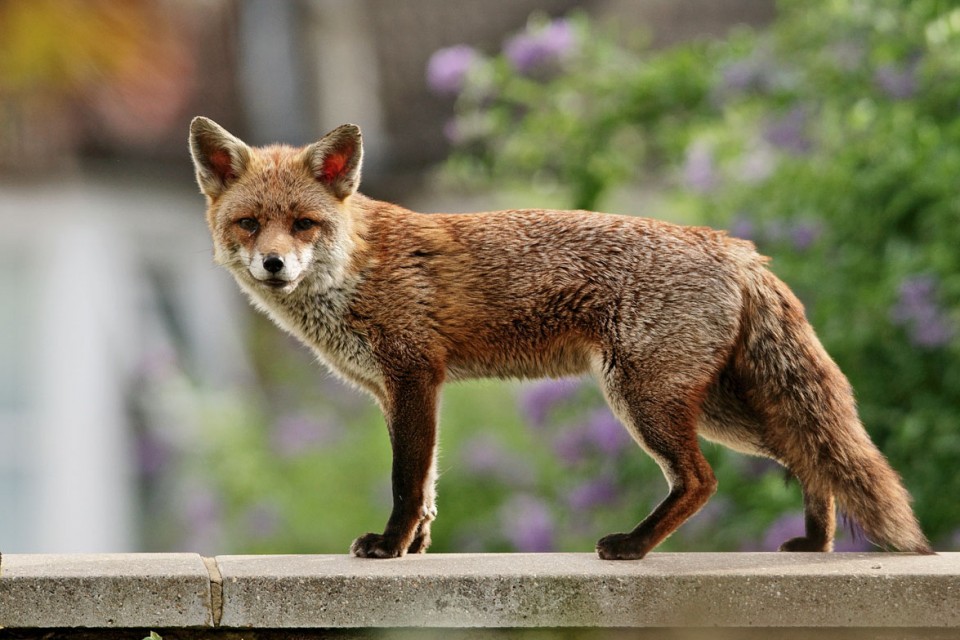
We don’t need to know FZ theory in any great detail, only that as an animal gets more used to your presence (and doesn’t regard you as a threat), the FZ diminishes, allowing you to get closer. Here we have our first important point. It’s very easy to interpret a reduction in the FZ as the animal getting bolder, when it’s actually an indication of the animal becoming more comfortable with us. Indeed, it’s still very rare for wild foxes to actually walk up to a person in the street. Again, our definition of boldness deals with how readily an animal approaches an object, not whether an animal runs away from it – that’s the flight zone. So, if anything, rather than bolder foxes, we’re seeing more ‘indifferent’ foxes, which just don’t really care that we’re around.
Urban-rural divide
Most people in Britain live in towns and cities and fox populations also tend to be higher in such environments than in more rural settings. Consequently, foxes and people are much more likely to interact in an urban area than in the countryside, making it difficult to know whether more reports of bold/complacent foxes from towns genuinely reflect urban foxes being bolder than rural ones, or if it’s an artefact of the uneven distribution. Nonetheless, the general observation appears to be that rural foxes are warier of people than their urban cousins. Why might this be? I suspect the answer lies in two areas: firstly, people’s tolerance of foxes in the two environments is probably different; and, secondly, the two environments vary in their stability.
It appears that foxes living in urban areas have come to realise that most humans pose little threat to them; they have probably also learnt that humans can be a source of food. If something doesn’t pose a threat, it’s generally ignored and there’s certainly no need to waste precious energy running away from it. Even in the true sense of boldness, a city fox walking up to a person in the street or a back garden is likely to dodge a poorly-aimed kick at worst, while in other cases the animal may get rewarded (i.e. given food). Provided the approach doesn’t endanger the fox, it has nothing to lose because there’s always the possibility it will get a meal. Behaviourally-speaking, it is now reasonably well established that bold individuals seem better able to form routines than shyer animals, which makes them better suited to ‘constant’ environments such as urban areas where food distribution is reasonably predictable.
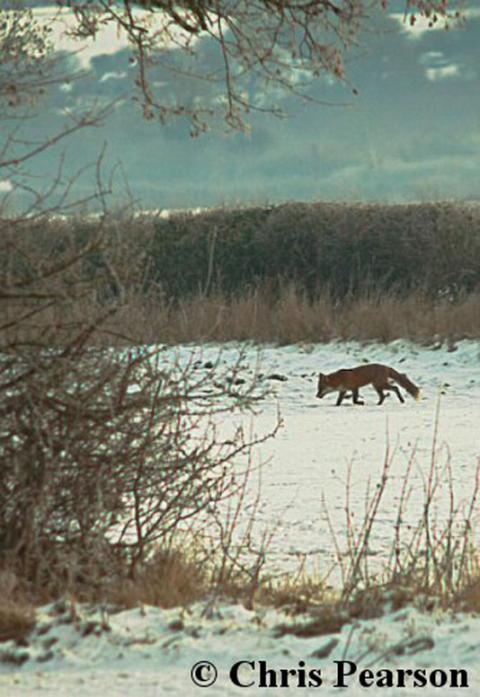
A fox walking up to a farmer or gamekeeper in the countryside, by contrast, is likely to be met with the business-end of a rifle or shotgun. There’s a reasonably good chance that it won’t survive the encounter and thus, if such behaviours have a firm genetic grounding, the trait of ‘strolling up to passers-by’ won’t get passed on. Indeed, for a country fox, keeping out of sight and avoiding people is often the key to a long and healthy life and we see this in wild populations outside of Britain. In their 1982 comparison between the Red and Arctic foxes, for example, Oxford biologists Páll Hersteinsson and David Macdonald noted how the latter species is 'tamer' outside Iceland, where it is hunted intensively for its fur; they also point out that, in Israel (where foxes are largely protected), Red foxes "become very tame, although remaining shy in areas where Beduin eat them". Additionally, just as bold individuals seem better adapted to constant environments, shyer animals appear more flexible in their behaviour, which makes them better able to adapt to stochastic (variable) environments such as rural areas where more pronounced seasonality makes food less predictable. With these contrasting environments in mind, we can now start to see how, over generations, populations evolve to include bolder or shyer individuals.
It would be convenient if we could tie this nicely with boldness being a behaviour that was either beneficial or problematic in certain environments (i.e. urban vs. rural) as this would help us explain, in evolutionary terms, why we might expect foxes to be bolder in towns and cities than in the countryside. Unfortunately, for our explanation, foxes are individuals and they modify their behaviour based on individual threats; they don’t appear to consider all humans alike. Hence the same fox might be bold in some cases and timid in others.
I have heard it said many times that a fox fed by someone in their garden is likely to associate people in general with food, making it equally likely to wander up to a stranger (who may be less fox-friendly) looking for a meal. I cannot say for sure that this doesn’t happen, but I personally do not think this gives foxes enough credit. In my experience, foxes learn to trust the person putting the food out. Indeed, where I have been lucky enough to observe foxes that are regularly fed it is interesting that the person putting the food out often later comments how the foxes were decidedly warier when I (a stranger) was there than they normally are. This implies that foxes learn to recognise and trust certain individuals -- something widely reported by those with experience rearing/rehabilitating foxes -- rather than assuming every person is the same.
The universal fox
There can be little doubt that urban foxes have become accustomed to the comings and goings of people over the 60 years or so they have shared our cities; but it is interesting how only a few observations can be sufficient for us to form a broad opinion on this behaviour. On a site where I used to regularly watch foxes in an industrial area of Southampton, several of the animals were active during the day, seemingly tolerant of people and vehicles moving around; one animal in particular regularly wandered around a busy car park, while others hugged undergrowth around the periphery of the site. I wasn’t able to census the whole site, but was confident in my identification of at least six individual animals, including members of a family that raised cubs in an earth bank in one corner of the grounds. I only observed one litter raised at this location, but local residents told me that many generations of foxes have grown up on the site.
Speaking to some of the people working on the site, I got the impression that the foxes were considered “brazen”. This opinion seemed, however, largely based on the few individuals, such as the one frequenting the car park, that were very tolerant of people; several times I saw people walk past a fox sheltering in the undergrowth seemingly oblivious to its presence. Less than a mile down the road, foxes visited the urban gardens at dusk and, for these animals, the opening of a window was sufficient to send them darting for cover. A mile-or-so further on and you’re on the fringes of the New Forest where, in my experience, foxes can be frustratingly difficult to even glimpse, although their signs abound.
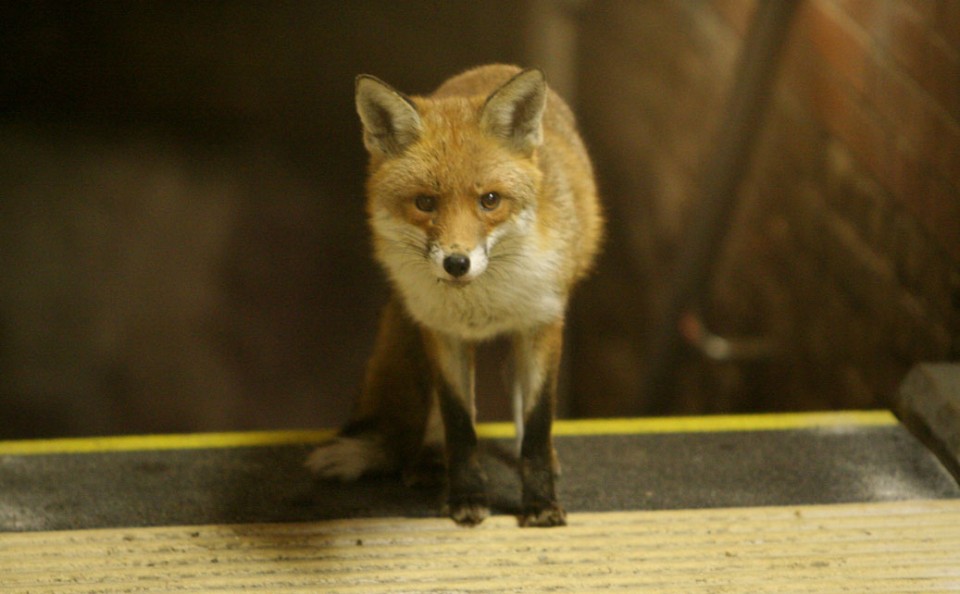
The point here is to illustrate that foxes, like any other animal, are individuals and different foxes behave differently; each has a different FZ and fits at a different position along our SBC. Thus, we must be careful about applying our experience with one, or even several, animals to the species as a whole – the fact that some foxes are bold doesn’t mean all, or even most, foxes are bold, any more than some foxes being shy make all foxes shy. Indeed, some intriguing new data from Bristol University suggests that social rank and social setting affects how neophobic foxes are.
During November and December 2014 (the peak dispersal period) and in May 2015 (peak cub-rearing period), Roberto Padovani and colleagues looked at how foxes behaved around a novel structure, a wooden obelisk with spinning balls that reflected light, placed in a garden in north-west Bristol. The researchers made just over 2,100 observations and their data, published in the journal Ecology and Evolution during 2021, showed that boldness was inversely related to social status, but positively correlated with immediate group size. In other words, dominant foxes appeared more neophobic/wary than subordinates, but were generally less cautious while foraging with other foxes. Consequently, this study suggests that it's not necessarily just the individual's personality that matters when considering the boldness-shyness continuum, but also its social standing within the group and whether it's on its own at the time of the interaction. These data also imply that the boldness/neophobia may change over time, if a territory holder is overthrown or a subordinate gains a territory.
The human connection
Recently, the press has carried stories of foxes venturing into people’s houses and biting them, which raises the question of whether simply being bold also means more aggressive? These are invariably serious incidents, although ambiguity of the circumstances makes it difficult to draw conclusions. We don’t fully understand what controls boldness and aggression in animals but it does appear that areas of the mid-brain respond to hormones (especially testosterone) and certain pheromones causing aggressive behaviour in mammals. Scientists in the USA recently found a protein molecule in the brain of mice (called stathmin) that is crucial for triggering the fear response and when the gene that tells the body how to make the protein was removed the mice were “courageous”.
The “Fox Farm Experiment” in Siberia, the longest-running empirical selective breeding experiment of any mammal in the world, succeeded in producing some animals that were “tame” and actively sought human contact (approaching people, jumping up at them, licking them, etc.) and others that were highly aggressive and actively tried to bite people who approached their cage. Both these behavioural “types” could be considered bold, although the more aggressive animals tended to back away from people until the last moment, while the tame animals actively approached them. More interestingly, this ground-breaking study illustrated that aggressive or tame behaviour was in the fox genome. Cross-fostering experiments, where aggressive cubs were raised by tame mothers and vice versa, had no impact on the behaviour of these foxes as adults. Similarly, implantation of embryos from aggressive vixens into tame ones still produced aggressive cubs. It appears, from the gene sequencing data that the researchers are currently studying, that a suite of genes code for a fox to be either aggressive or tame and its upbringing doesn’t change that outcome.
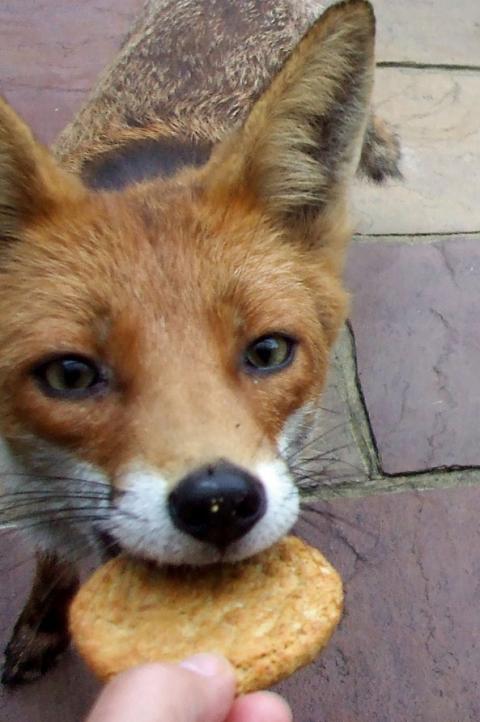
These and other experiments make it clear that, although there may be cases where boldness and aggression are linked, the data suggest these two behaviours are likely to be independently controlled. In other words, standing and looking at you rather than running away doesn’t mean an animal’s inherently aggressive. I suspect most of us have experienced this first hand. I frequently encounter dog walkers while I’m out and about, for example, and it is not uncommon for the dog to run up to me to see if I’m someone, or something, interesting. The dog is bold, but shows no signs of aggression towards me. Also, you probably pass hundreds of people every day on your way to work who don’t run away from you, but that doesn’t mean they’re aggressive people. Similarly, sit on a park bench and eat your sandwiches at lunchtime and you’ll almost certainly be approached by squirrels and/or pigeons; they won’t run away, but they’re exceptionally unlikely to launch an attack. In many cases it is our unfamiliarity or inexperience with an animal or situation that makes us think it is dangerous – better safe than sorry.
If bolder (or more indifferent) foxes aren’t any more aggressive than shyer ones, what else could explain the incidents in the media recently? There are some diseases, most notably toxoplasmosis, that can cause behavioural changes in foxes, making them more likely to approach people and this may account for some cases. Alternatively, every year the Fox Project receives photos from members of the public showing “their foxes” asleep on the sofa or in front of the fire, suggesting that in some cases people actively encourage foxes inside. I don’t believe that a fox would mistake somebody else’s house for that of the person initially feeding them, but they are opportunists and it seems probable that the animal could learn that houses are a good place to look for food – much like many pet cats find their way into neighbouring homes. Of course, an increase in boldness, which manifests as foxes allowing people closer to them, has the potential for disaster if those people decide to treat the animal as an extended pet, or behave in a hostile manner. I have said it before on this site and will repeat it here for completeness: foxes are wild animals, not pets. A little common sense employed when dealing with our wild neighbours can go a long way in reducing human-wildlife conflict.
So, in conclusion, decades of living side by side with humans that pose no real threat appears to be causing foxes to be less concerned in our presence – this is interpreted by many as them being bolder. Many people expect foxes to be nocturnal and flee at the sight of a human such that seeing foxes out and about (particularly during the day) and apparently unfazed by people makes them nervous. It is important to realise, however, that indifference is not the same as aggression and there is no evidence that foxes living in towns and cities pose a threat to the human inhabitants. Furthermore, seeing foxes during the daytime may give the impression that there are lots of foxes about; but studies by Brighton University have shown that fox sightings are not closely linked with fox numbers. If you do see foxes in your neighbourhood the best advice is to watch from a distance and, ideally, record their presence on PTES' Living with Mammals survey that runs every spring. If you have problems with foxes in your garden, there are steps you can take to deter them from you’re your property.
Editor's Note: My sincere thanks are extended to Dr Sarah Moore for taking the time to proof-read this QA and providing some invaluable thoughts and feedback.